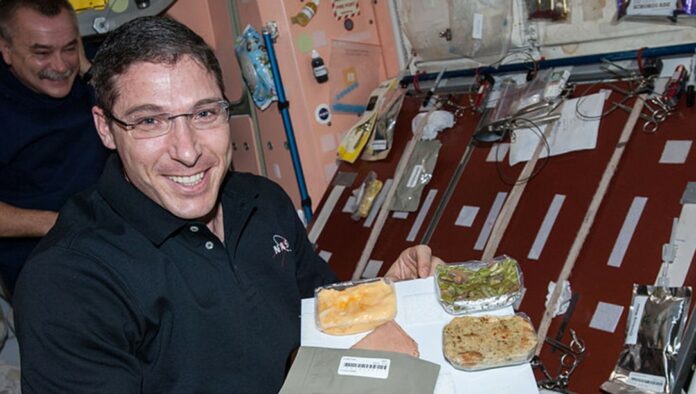Food is such an important part of our lives and culture. For astronauts who embark on a long time mission in space, food plays a psychological and social role during their mission. With all options available on Earth, it’s hard to imagine astronauts being limited when embarking on a 6-month mission on the International Space Station (ISS) but it’s also very weird to imagine them eat 3D printed meals made from plastic waste.
As you may guess, the weirdness in this sentence is not the part that is 3D printed; it’s the part that reveals the component that constitutes the meal. Yet, this is the project of NASA, JAXA, the European Space Agency, and other organizations that are on a mission to develop ways to produce food in space.
Those solutions to feed humans during long-term space travel and habitation have recently been discussed at CES 2023. The idea of using plastic waste to create 3D printed meals could be given life thanks to Beehex, a company founded by NASA-affiliated entrepreneur and engineer Anja Contractor that develops deep-space food solutions using various 3D-printing food technologies.
Since cooking is not an option in space, a key goal here is not primarily to satisfy astronauts’ taste buds, but to maintain the health and optimal performance of astronauts with food that meets the nutritional needs of each crew member while adhering to the requirements of safety, limited storage space, limited preparation options, and the difficulties of eating in microgravity.
So, how does this work?
According to Contractor, “plastic waste is collected, which will be shredded. It will eventually move into the bioreactor, which contains very specific engineered bacteria.” The engineered bacteria eat the plastic and convert it into biomass. This biomass can then be used to produce a variety of textures and shapes. “So if you want to create steak out of plastic, the entire mechanism on one side of this container will be able to produce steak out of plastic- or chicken breasts,” he explained.
On another note, implementing this solution could also help overcome food issues on earth – by placing for instance, this sort of containers at food disaster relief operations such as those related to FEMA (Federal Emergency Management Agency), or locations where there are refugee camps.
“The payload needs to be very lightweight. We anticipate that this project will kick off probably somewhere around 2026 to 2027. And the first application will be Moon-based,” Contractor concluded.
Source : IE. Remember, you can post free of charge job opportunities in the AM Industry on 3D ADEPT Media or look for a job via our job board. Make sure to follow us on our social networks and subscribe to our weekly newsletter : Facebook, Twitter, LinkedIn & Instagram ! If you want to be featured in the next issue of our digital magazine or if you hear a story that needs to be heard, make sure to send it to contact@3dadept.com


